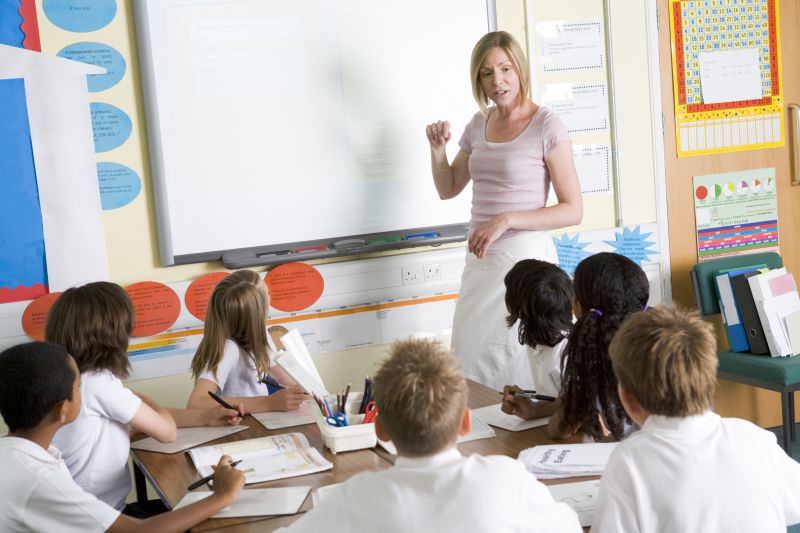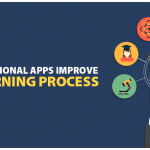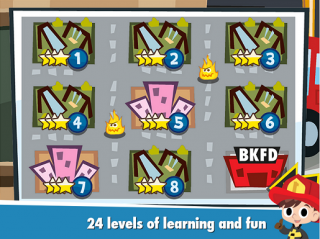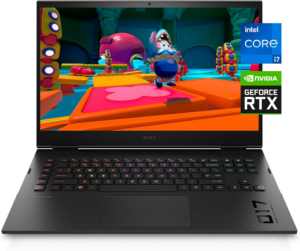As the days go by everything changes, including the art of learning through teaching. Today, the orthodox teaching resources are no longer as appealing as they used to be. Students want the learning process to be more fun, and teachers are saddled with the burden of researching, understanding and adopting the most recent and practical teaching resources out there.
And in this jet age we live in, the best teaching resources are those that make the process smoother. Consider the fact that techifying the classroom comes with a lot of advantages such as:
• Making the class very exciting.
• Reducing the academic workload on the teachers.
• Creating an avenue for every student to participate.
• Improving student memory power with the use of colorful graphics and related videos.
To this end, the use of advanced technological devices and means to techify the teacher’s educational methods becomes crucial. So, in this article, we look at some of the best teaching resources out there. We begin with a blog; an innovative entrant to the list.
Teaching Resources to Techify Education
1. A Blog or Website For The Class
Gone are the days when learning had to be done only in the classroom and through the use of crude analog teaching resources. Today, it is possible to employ blog technology in the learning process. Usually, the class teacher creates a simple blog or online forum for his/her students.
Through this blog, students get interactive by participating in the academic activities their teachers coordinate online. These usually range from educative posts to academic contests. Beyond these didactic online engagements, the website also serves as an avenue for the teachers to send some assignments, projects, and lessons across to students; especially after school hours. And just to make sure students do not waste their holidays, the blog can serve as a means of engaging students while offering them some “light” education.

Although it may not be noticed at first, research has shown that on the long run, this system creates a significant difference. For instance, students subjected to such e-learning resources show more receptiveness and enthusiasm to education in general.
2. Electronic whiteboards Technology
Tracing the history of learning board development will show just how much the education board has developed. At a time, the early man used plywood and charcoal, later chalks replaced charcoal and then came the marker board. Today, the whole process has become even more techified by the advent of electronic whiteboards.
Since 1991, when the very first whiteboard was invented, it has grown to enjoy tremendous usage among schools with at least three-quarters of UK schools adopting it and about one-fifth of American schools using it currently.
The whiteboard is a more sensitive and smarter board which can be controlled by using the finger to punch or swipe its screen. The swiping makes the board come to life by giving the content of the board some dynamism. It is then common sense that a board with movable images will more readily attract students’ attention than a regular marker board whose content does not move.

A whiteboard looks like a big but simple smartphone. It allows the operator to display photos, videos, links and more during the teaching process. A significant advantage this affords both teachers and students is that it lets learning take place without the usual intensity. Compared to the orthodox techniques which turn the teacher to something more like a stern martial arts instructor, the use of whiteboards makes the teacher look like an Apple Ambassador demonstrating how customers can operate the latest iPhone.
Although different types of whiteboards exist out there, the type of whiteboard that is mostly used in the classroom is the Interactive whiteboards.Consider teaching a course like biology or geography with an interactive whiteboard. The results will be epic as the whiteboard will brings the maps relief features of geography to life just as it will add flavor to the learning of biology.
3. Use of Gaming Technology
This, in my opinion, is the smartest of all teaching resources available to both teachers and students today. Games are naturally addictive to children and young people while learning is unfortunately not. The catch here is that the entertainment games provide blended with the relevant lessons the designers want to pass across. As the student plays these games, he learns in the process. In fact, the more addicted the student becomes with the game, the more he learns from it.
Beyond the scope of academic learning, some games teach other essential skills of life to both old and young. Let us illustrate with the game of chess. It may not teach students how to spell new words or do basic math, but it sure helps students in many ways such as in sharpening their cognitive abilities, instigate innovation in their minds, and keep them mentally alert.
Before now, parents and teachers alike used to get students of video game screens by all means. In some families, it was a taboo to play video games for more than 30 minutes or one hour. For some families, their kids are completely prohibited from gaming. This was in the era of Super <aria, Mortal Kombat and generally, games which hold little educational promises for kids. The story, however, changed when great investments were made in the educational game sector.
So great was this success that some schools incorporated gaming education in their academic curriculum.To this end, it is important we observe some of the most popular educational games in existence today.
Minecraft:
The Minecraft is one of the most popular games in the educational gaming sector, and indeed, the world. Although there have been many variations to it, the process is the same. Minecraft is a game where players create blocks by creatively arranging the various patterns or shapes the system feeds them.
Depending on the creators and the need for their creations, these games can be used to teach mathematics and several subjects that deal with the creative mental faculties of the mind. Geology, Geometry, and virtually all related subjects can be taught using variants of this game.
Pandora Project:
It is nearly not possible for students to play the Pandora Project game without pushing getting pushed beyond their limits. This game which affords students the opportunity of taking on tough roles is a valuable teaching resource that teachers can use to techify the class.
Gamestar Mechanic
The last example of an educative game teachers can use as a veritable teaching resource is Gamestar Mechanic. For teachers and students in the computer sciences, this game is a sacred resource as it makes programming easy and fun. To achieve this effect, the game is designed in a way which allows users to solve some challenging puzzles the system feeds them while offering them the chance to develop their own video games.

4. The Use of Videos
Everybody likes videos and students are no exception. 100 years ago, classrooms were very much primitive and orthodox. Nobody thought a day would come when elements of technology such as videos would become a central aspect of classroom instruction.
Today, instructors have learned the importance of using videos in teaching, and that is why more and more students are finding the classroom more exciting. Compared to personal reading, it is easier to remember information heard from another individual, but videos make the whole thing stick faster. It is as a result of this that videos have gone on to become one of the best teaching resources that techify the teaching process.
How are these videos used? Where can they be created? If the instructors have the necessary video editing skills, they can do it themselves. There are video editing tools such as Camtasia, Windows Movie Maker and more. But in the absence of the necessary skills or time, instructors can seek alternatives such as:
• Downloading related videos from YouTube, Vimeo, etc
• Hiring freelancers to create the desired videos. These freelancers can be found on many freelancing websites around the world such as Fiverr, Truelancer, Upwork and the rest of them.
5. Use of Social Media
At the onset, the social media was nothing other than what is was meant to be: social media. People joined top social media platforms such as Facebook, Twitter, Myspace, Bebo and Hi5 so as to reconnect with friends, meet new people and build great networks.Initially, nothing serious happened on the social media sphere. It was all about entertainment. The story has completely changed.

Today, there are a whole lot of ways the social media has been used to facilitate activities in different areas of life. Politicians, as well as entrepreneurs, are tapping into the power of the social media but what is of importance to us here is how educational institutions can tap into the influence of the social media realm too.
Although it is relatively new, teachers can and do create Facebook groups where their students can use to access some of the teacher’s extramural instructions. Teachers can also create contests on social media and have their students participate. This usually creates an atmosphere for introverted students to socialize with their classmates without feeling shy or fearing criticism.Some other social media resources that techify the teaching process include Google Hangouts, Facebook Pages, and Instagram short videos.
There are rules that guide the use of social media as a teaching resource. For instance, students that are not old enough should not be allowed to participate in these activities. For Facebook, the student must be at least 13 years old, and this varies from website to website. Again, the privacy of students must be respected. It is also important for that the instructor always remembers that the use of social media is to facilitate the learning process by creating a lively environment for all participants.If this important fact is not kept in mind, both teachers and students risk getting misguided, and the aim of using social media defeated.
6. Use of Podcasts
It may not have achieved the popularity it deserves but podcasts are not new in anyway.I believe you must have listened to podcasts from popular people or blogs intentionally or accidentally. Although most podcasts are associated with business or politics, they can still be used in the academic world to facilitate the learning process.
Usually, podcasts are found on websites and play when a visitor clicks the related buttons on the site. Sometimes it plays automatically. Either way, students whose teachers have academic blogs can learn in even more creative ways by the use of podcasts. Podcasts are very important to the learning process depending on the subjects and situation. For instance, podcasts are ideal when:
• The subject has to do with phonological sounds and more.
• The subject has to do with music.
• Extra information, perhaps an extracurricular one, needs to be communicated to students.
• The students are at various locations at the same or different times.
In these and many other ways, podcasting is one of the very important teaching resources that techify the teaching process.
Some inspiring podcast by educators: Edutalk | History of World (BBC)| Valerie Lewis (Classroom 2.0)
Conclusion
What you have just read are some excellent methods teachers can use to make their classrooms livelier by leveraging the power of technology. Technological devices, methods, and systems eliminate the strict atmosphere that is predominant in the most classroom environment.Teachers must, however, exercise caution in their use of technology in the teaching process. In fact, adherence to these few hints will help a whole lot.
• Since techifying the class makes learning fun, teachers must control the degree of the excitement generated so as to ensure that the goal of using these devices is not defeated.
• Teachers should also note that not all students have the same level of technical intelligence; hence, the teacher should make the whole process so simple that everyone tags along.
• Teachers should also watch out for the laziness which usually accompanies the overuse of technology.
Related Articles to Teaching Resources:
Manipal Education Group Commences Programmes In Data Science
Clevertap Brings The Power Of Triggered Notifications & Live User Segments To The Education Market













